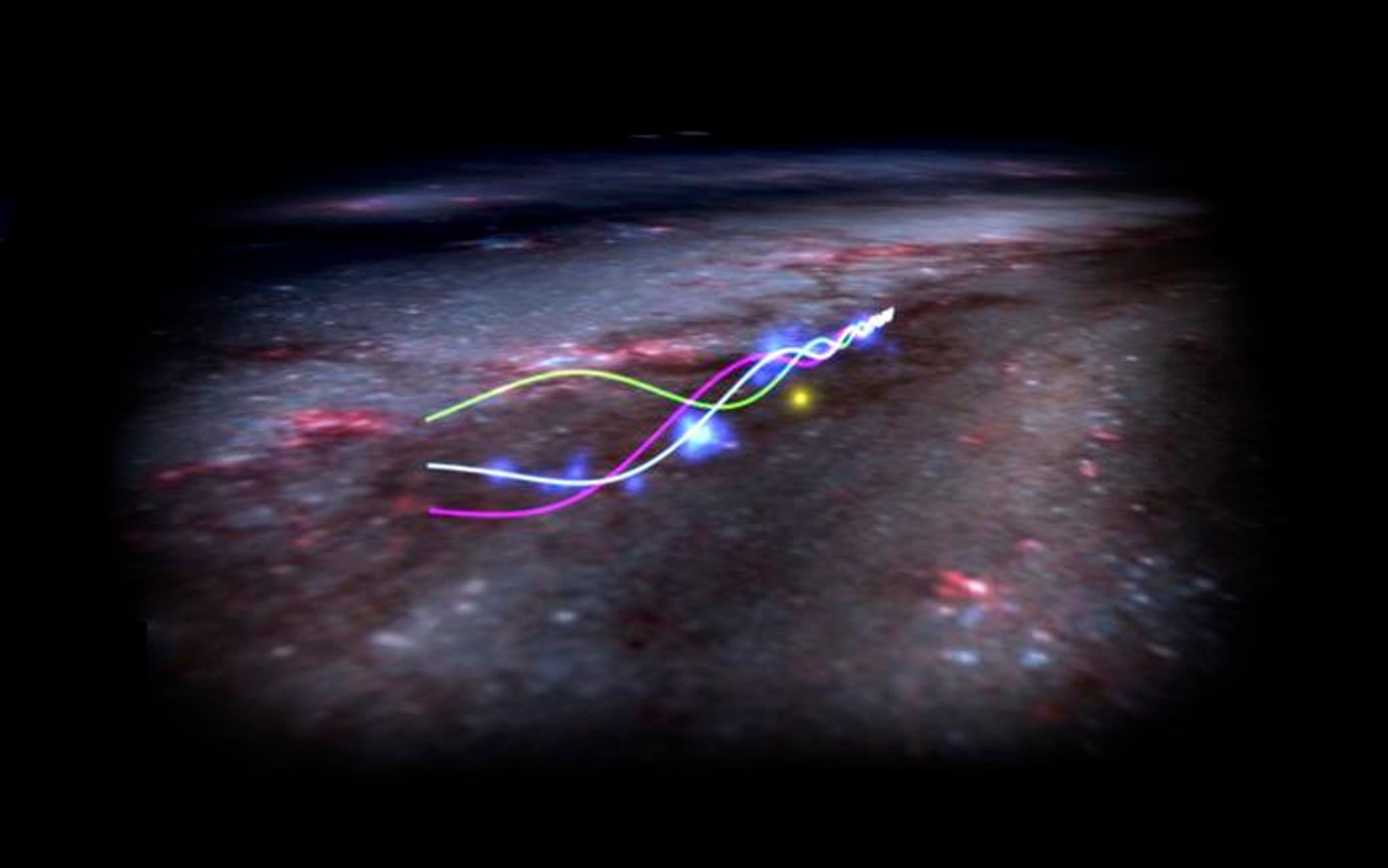Galactic Symphony: The Oscillating Wonders of the Radcliffe Wave
A recent study published in Nature investigates further evidence that a gaseous cloud both looks and behaves like an oscillating ocean wave, giving birth to new stars as it traverses the Milky Way Galaxy, which has since been dubbed the Radcliffe Wave. This study was conducted by an international team of researchers led by the Center for Astrophysics | Harvard & Smithsonian and holds the potential to help astronomers better understand the beautiful and fascinating aspects of our cosmos.
Image obtained from an animation of the Radcliffe Wave with our Sun (yellow dot). (Credit: Ralf Konietzka, Alyssa Goodman, and WorldWide Telescope)
This study builds on a 2020 study used data from the European Space Agency’s Gaia mission to build a 3D dust map demonstrating that the Radcliffe Wave was there, but the data proved inconclusive pertaining to the movement of the dust cloud. The Radcliffe Wave is approximately 500 light-years from Earth and stretches 9,000 light-years across, making it an ideal target for astronomers to examine. For this most recent study, the team used updated Gaia data to build new 3D maps that demonstrated the Radcliffe Wave both looks and moves like a wave.
“It’s the largest coherent structure that we know of, and it’s really, really close to us,” said study co-author, Dr. Catherine Zucker, who is an astrophysicist in the Center for Astrophysics | Harvard & Smithsonian and details the research in a related article published in Sky & Telescope. “It’s been there the whole time. We just didn’t know about it, because we couldn’t build these high-resolution models of the distribution of gaseous clouds near the sun, in 3D.”
Along with the oscillation discovery, the study also attempted to calculate how much dark matter could be influencing the oscillation, but the researchers determined that ordinary matter is the primary diving force of the wave. Additionally, the researchers determined the Radcliffe Wave comprises the backbone of the closest Milky Way spiral arm, which raises further scientific questions pertaining to potential oscillating behavior of not only the spiral arms within our Milky Way, but other spiral galaxies, as well.
What new discoveries will astronomers make about the Radcliffe Wave and other potential Radcliffe Waves in the coming years and decades? Only time will tell, and this is why we science!
As always, keep doing science & keep looking up!
Sources: Nature, Center for Astrophysics | Harvard & Smithsonian, EurekAlert!









